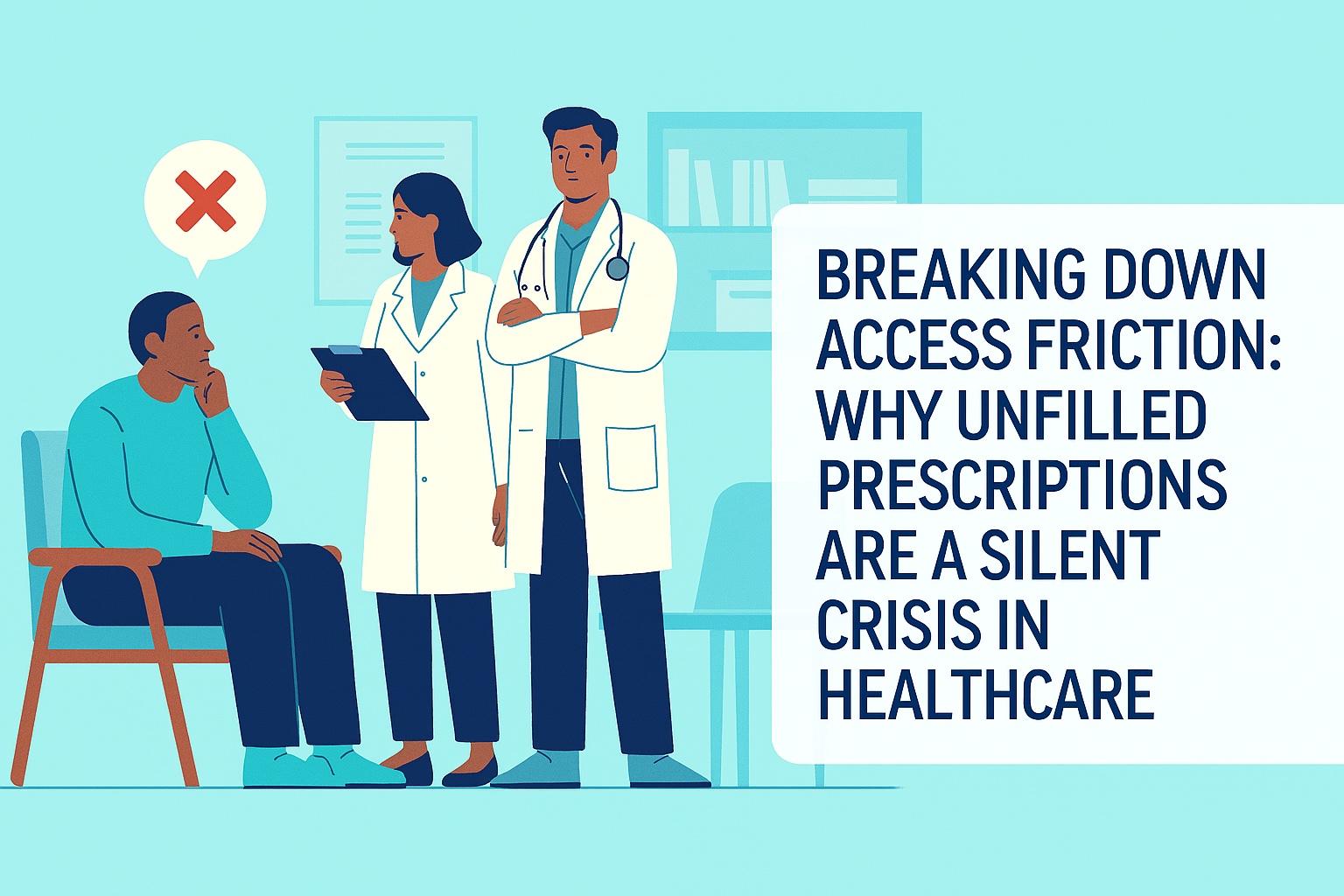The Hidden Barrier to Better Health
Every day, millions of prescriptions are written with the intent to improve patient outcomes, manage chronic conditions, or treat acute illnesses. Yet, a startling number of these prescriptions never make it to the pharmacy counter. This phenomenon — known as access friction — is a growing concern in healthcare, driven by payer rejections, high out-of-pocket costs, and administrative hurdles like prior authorization (PA). The result? Patients abandon their medications, and the promise of new therapies remains unrealized.
How Many Prescriptions Go Unfilled?
Access friction is not a fringe issue — it’s a systemic challenge. Studies show that up to 30% of new prescriptions are never filled.¹ This abandonment rate is even higher for specialty medications and therapies with complex benefit designs. The reasons vary, but they often boil down to three key factors:
- Payer rejections: Insurance plans may deny coverage for certain drugs, especially newer or high-cost therapies.
- High out-of-pocket costs: Even when covered, copays and deductibles can make medications unaffordable.
- Administrative barriers: Prior authorization requirements delay access and frustrate both patients and providers.
Why Access Friction Matters: Clinical and Social Impacts
When prescriptions go unfilled, the consequences ripple across the healthcare system:
- Undermined clinical outcomes: Patients who don’t start their prescribed therapies are at higher risk for disease progression, complications, and hospitalizations.
- Increased health inequity: Low-income and marginalized populations are disproportionately affected by cost-related nonadherence.²
- Reduced real-world impact of innovation: Pharmaceutical breakthroughs lose their value if patients can’t access them.
Necessary Gatekeeper or Bottleneck?
Prior authorization is intended to ensure appropriate use of medications, but in practice, it often acts as a bottleneck. Providers must navigate complex forms, fax systems, and long wait times. According to the American Medical Association, 86% of physicians report that PA requirements lead to delays in care.³
For patients, these delays can mean days — or even weeks — without needed treatment. In some cases, the process is so burdensome that patients give up entirely.
When Coverage Doesn’t Equal Access
Benefit design refers to how insurance plans structure coverage, including formularies, tiering, and cost-sharing. While these designs aim to balance affordability and access, they often create unintended barriers:
- High deductibles: Patients may face hundreds or thousands of dollars in upfront costs before coverage kicks in.
- Non-preferred tiers: Medications placed on higher tiers come with steeper copays.
- Step therapy: Patients must try and fail cheaper alternatives before accessing prescribed treatments.
These design choices can lead to abandonment, especially when patients are unaware of the costs until they reach the pharmacy.
Specialty Medications and Abandonment Rates
Specialty drugs — used to treat conditions like cancer, rheumatoid arthritis, and multiple sclerosis — are particularly vulnerable to access friction. A recent analysis found that nearly 50% of specialty prescriptions are abandoned when out-of-pocket costs exceed $125.⁴
This is especially troubling given that these therapies often represent the best—or only—option for managing serious diseases.
Designing for Access
Pharmaceutical companies must consider access friction early in the development and commercialization process. Strategies include:
- Affordability tools: Copay cards, patient assistance programs, and value-based contracts can reduce financial barriers.
- Simplified PA workflows: Digital platforms and real-time benefit checks can streamline the authorization process.
- Patient education: Clear communication about coverage, costs, and support resources can empower patients to follow through.
By designing with access in mind, product teams can improve adherence and maximize the real-world impact of their therapies.
Supporting Adherence Beyond the Prescription Pad
Health systems also play a critical role in reducing access friction. Key interventions include:
- Pharmacy navigation services: Helping patients understand coverage and find the most affordable options.
- Integrated care teams: Coordinating between providers, pharmacists, and payers to resolve access issues.
- Data-driven outreach: Using electronic health records to identify patients at risk of nonadherence and intervene proactively.
These could not only improve patient outcomes but also reduce avoidable costs from complications and hospital readmissions. Such changes could dramatically reduce abandonment rates and improve equity in medication access.
References
- JAMA Network – Medication Nonadherence: A Call for Action
- CDC – Prescription Medication Use, Coverage, and Nonadherence Among Adults
- American Medical Association – Prior Authorization Survey Results
- IQVIA – Medicine Use and Spending in the U.S.
Was this post helpful?
Get more help with Tailored Second Opinions for Free!
Ready to explore better options?
and start running reports instantly!


